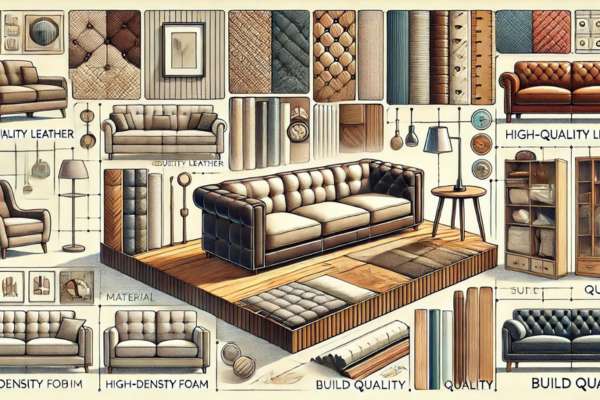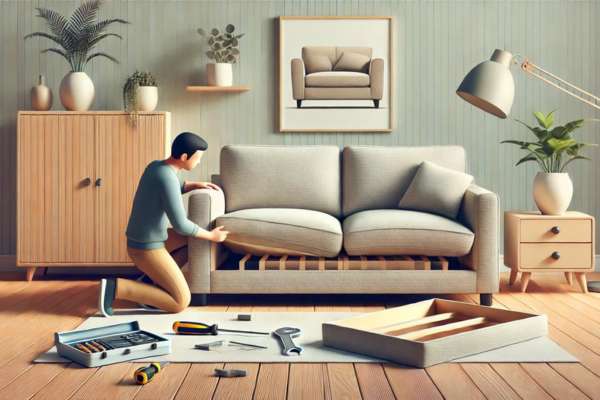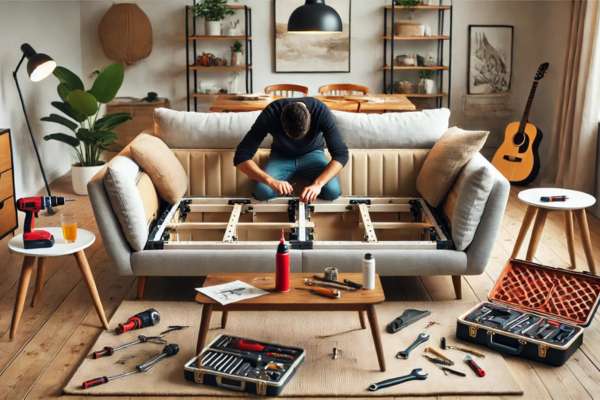Discover the reasons behind the unsettling noises of your living room staple with our latest exploration into “Why Does My Sofa Creak?” A creaking sofa can transform a peaceful sitting into an annoying disturbance, prompting questions about its durability and construction. In this article, we delve deep into the anatomy of sofas, identifying potential culprits such as age, wear and tear, and structural weaknesses. Whether your sofa is an antique treasure or a modern ensemble, understanding these factors can help extend its life and restore tranquility to your space. Join us as we unpack the mysteries of sofa sounds, offering insights and solutions to keep your seating serene and squeak-free.
Understanding Sofa Construction

Understanding the construction of your sofa is crucial in pinpointing why it might creak. At its core, a sofa consists of a sturdy frame, typically made from wood or metal, which supports the entire structure. Attached to this frame are various joints that, if not properly secured, can become loose over time and produce noise. The sofa’s comfort comes from its springs and padding, which can also contribute to creaking if they wear out or shift from their original position. By familiarizing yourself with these fundamental components—frame, joints, springs, and padding—you gain valuable insight into the potential sources of those mysterious creaking sounds that disrupt your relaxation.
Identifying the Causes of Creaking

Identifying the causes behind your sofa’s creaking noises is crucial for maintaining a peaceful home environment. Commonly, the culprit is loose joints where the frame pieces connect, often due to prolonged use or insufficient initial tightening. Aging materials also contribute, as wooden frames dry out and shrink, metal springs wear out, and support structures become less stable over time. Additionally, poor quality or worn-out springs can lose their ability to bear weight evenly, leading to noisy friction. Lastly, inadequate frame support, particularly in less expensive sofas, can result in instability and creaking as the sofa bears weight. Understanding these factors helps pinpoint the exact issue, guiding effective maintenance or repair solutions.
Impact of Material and Build Quality

The quality of materials and construction techniques significantly impacts both the durability and the noise level of your sofa. Sofas built with high-quality woods, such as hardwoods like oak or maple, typically have sturdier frames that are less prone to creaking. Similarly, the type of springs used, such as sinuous springs or eight-way hand-tied springs, can greatly influence how much noise a sofa makes under pressure. Poor craftsmanship, including weak joints and improper fitting of components, can lead to premature wear and annoying noises. Investing in a well-constructed sofa with premium materials can enhance its lifespan and ensure a quieter, more comfortable experience.
Maintenance Tips to Prevent Creaking

To keep your sofa from creaking, regular maintenance is key. Start by tightening all visible screws and bolts, as loose fittings are a common cause of noise. Lubricating the joints with furniture wax or silicone spray can also reduce friction and quiet those annoying sounds. Additionally, inspect your sofa regularly for signs of wear and tear, such as sagging cushions or loose joints. Replacing worn-out parts promptly can prevent further damage and maintain your sofa’s stability. For wooden frames, consider applying a small amount of wood glue to joints to reinforce them. These simple steps can significantly extend the life of your sofa and keep it comfortable and silent for years to come.
How to Diagnose Your Sofa’s Creak

If your sofa is starting to sound like a symphony of Creak, it’s time to play detective and pinpoint the source. Start by gently rocking the sofa to see if you can determine where the noise is loudest. Next, examine the underside of the sofa; you may need to remove the dust cover to access the interior. Check all visible fittings for any signs of looseness. For sofas with springs, press down on different areas to test for uneven resistance or noise, which could indicate spring issues. Tighten any loose screws and bolts you find, and take note of any areas that may require further professional attention. This systematic approach helps ensure you cover all potential problem areas efficiently.
DIY Fixes for a Creaking Sofa
If you’re troubled by the persistent creaks of your sofa, consider a few simple DIY fixes that can bring peace and stability back to your living room. Start by applying wood glue to any loose joints, ensuring they are firmly secured to reduce noise. For sofas with sagging or squeaky springs, replacing them can significantly decrease creaking. Additionally, adding padding around the frame edges can absorb excess movement and silence bothersome sounds. These straightforward solutions not only enhance your sofa’s durability but also restore the quiet comfort of your seating area, all without the need for professional help.
When to Call a Professional
When persistent creaking turns from a minor annoyance into a concerning disruption, it might be time to consult a professional. If your sofa exhibits extensive frame damage, visible spring malfunctions, or the creaking persists despite your best DIY efforts, these are clear signs that professional expertise is required. A skilled technician can provide a thorough assessment and precise repairs that go beyond superficial fixes, ensuring your sofa’s integrity and comfort are restored. Don’t let a creaky sofa compromise your home’s tranquillity—seeking professional help can save both your sofa and your peace of mind.
Choosing a Durable Sofa to Avoid Future Issues

When selecting a new sofa, prioritising durability is key to avoiding future problems like creaking. Opt for sofas with solid hardwood frames, such as oak or maple, as they are more robust and less prone to squeaking. Check for sturdy joints that are either dovetail or mortise-and-tenon, as these are indicators of quality craftsmanship that can endure stress and weight over time. Additionally, consider the support system; sofa Creak with high-density foam and heavy-duty springs are more likely to retain their shape and integrity. Finally, always inspect the sofa in person if possible, testing it for comfort and stability to ensure it meets your long-term needs and standards.
Conclusion and Summary
Understanding “Why Does My Sofa Creak?” not only enhances your comfort but also extends the lifespan of your furniture. Regular maintenance, such as tightening fittings and lubricating joints, is crucial for keeping your sofa in top condition. If the creaking persists, consider the age and quality of your sofa and whether it might be time for a professional repair or even a replacement. Remember, choosing a sofa with a robust frame and quality materials can prevent many common issues, including creaking. Stay informed and proactive about your furniture’s care, and enjoy a peaceful, squeak-free environment in your home.

